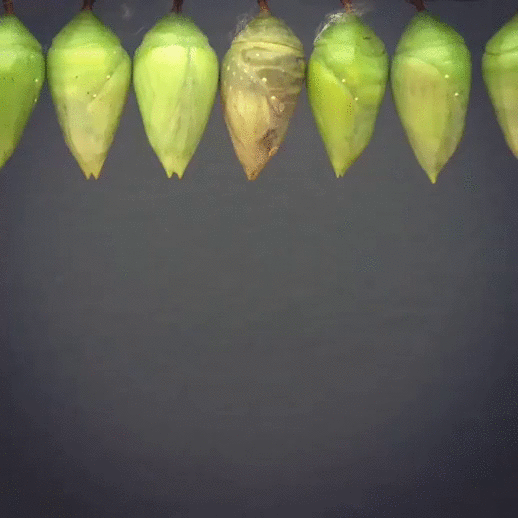
The tale of Pinocchio describes the transformation of a mechanical puppet into a real boy. In everyday terms, it represents the growth of a child into an adult. In Sufic terms, it symbolizes the metamorphosis of an ordinary person into a Perfect Human Being. As a consequence, we must look at it more closely.
“Pinocchio”
was published in 1883 by Carlo Collodi (whose real name was Carlo
Lorenzini). The story, however, is rather dark, with the puppet dying in
the end. Walt Disney reworked the story for his movie Pinocchio (1940), which has a much more meaningful ending. Kubrick & Spielberg’s A.I.
(2001) is closer to the original story: it describes the impossibility
of David, the robot child, ever becoming human. For this reason, it is
also more pessimistic, despite its realism. This indicates, perhaps, Spielberg’s recognition that hi-tech robot consciousness is no different than low-tech puppet consciousness. It is Disney’s gloss on the original tale that we will be referring to in what follows.
A machine or a wooden puppet cannot become a human being. But a human being can become a Perfect Human (called True Human, Zhenren or Chen-jen, in Chinese).
Pinocchio describes
the various situations encountered during one’s Inner Journey: from
spirit to Spirit, from self to Self. Jungian psychology as well as Sufi
psychology would agree that some parts of the Pinocchio saga resemble an
initiation ritual: the collapse and disintegration of the former self,
prior to rebirth as a new self. (See Prof. Jordan Peterson, 42:18 et seq. Among
famed psychologists, Carl Gustav Jung is the one who came closest to
Sufi psychology.) It is Pinocchio’s self-sacrifice and death in order to
save his father that enables his rebirth as a real boy. Some highlights
of the story are described below.
Pinocchio as Adam
In the beginning, giving life to Pinocchio is like the creation of Adam out of clay, about which God says: “I breathed into him of My Spirit” (15:29, 38:72).
In the beginning, giving life to Pinocchio is like the creation of Adam out of clay, about which God says: “I breathed into him of My Spirit” (15:29, 38:72).
What does this mean, exactly?
It
tells us that human beings are endowed with some attributes that also
belong to the spirit of God, such as life, knowledge, speech, will,
sight and hearing, many of which presuppose consciousness. This is where
consciousness, our consciousness, comes from. It is also what is meant by the “divine spark.” So there is a trail within us that leads to God.
But we have lost sight of it. Mohammed, the Prophet of God, is the one
who has travelled that inward path to its end, and for that reason is
the trustworthy guide on the way that leads back to God. This is also
why robots will never have consciousness—unless, of course, God breathes into them too (which, however, is not going to happen).
(Further details for those interested. In Islam, the “positive attributes of God” are: Life (hayat), Power (qudrat), Will (irâda), Knowledge (ilm), Creation (taqwin), Speech (qalâm), Sight (basar), Hearing (sam'). In Hinduism, Sat-chit-ananda or Being (Ar. wujud)-Consciousness-Bliss are the attributes of God or Ultimate Reality (Brahman).)
No-good Friends
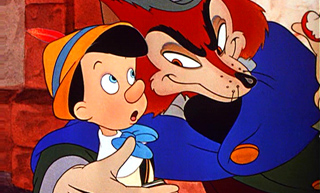 One
of Pinocchio’s mishaps is to make friends with a cunning fox (and his
sidekick). So-called “Honest” John is, in reality, as crooked as they
come. He does everything to lure Pinocchio off the tried-and-trusted
trail. He is sly and sneaky, clever and deceiving. He will do anything
for money, including throwing “friends” like Pinocchio under the bus.
One
of Pinocchio’s mishaps is to make friends with a cunning fox (and his
sidekick). So-called “Honest” John is, in reality, as crooked as they
come. He does everything to lure Pinocchio off the tried-and-trusted
trail. He is sly and sneaky, clever and deceiving. He will do anything
for money, including throwing “friends” like Pinocchio under the bus.
No-good Friends
 One
of Pinocchio’s mishaps is to make friends with a cunning fox (and his
sidekick). So-called “Honest” John is, in reality, as crooked as they
come. He does everything to lure Pinocchio off the tried-and-trusted
trail. He is sly and sneaky, clever and deceiving. He will do anything
for money, including throwing “friends” like Pinocchio under the bus.
One
of Pinocchio’s mishaps is to make friends with a cunning fox (and his
sidekick). So-called “Honest” John is, in reality, as crooked as they
come. He does everything to lure Pinocchio off the tried-and-trusted
trail. He is sly and sneaky, clever and deceiving. He will do anything
for money, including throwing “friends” like Pinocchio under the bus.
A
famous Sufi Master, Osman Badruddin of Erzurum, has said (and I
summarize): “Imagine a decapitated human head. Then imagine a hundred
hungry lions surrounding that head. What those hundred lions cannot do
to that head, one bad friend can do to you.”
So one has to be very careful about whom one befriends (or is befriended by) in the pathways of life.
Pleasure Island
Pleasure Island
Granted
that childhood is a special time most deserving of play, of fun and
games, should some restrictions still not apply? “Never too much” was
the motto of the Chinese sages. As the wise of all times and climes have
agreed, the avoidance of excess is necessary, and so it is in this
case, as well.

Herded by the Evil Coachman, the children run toward the entrance of Pleasure Island...
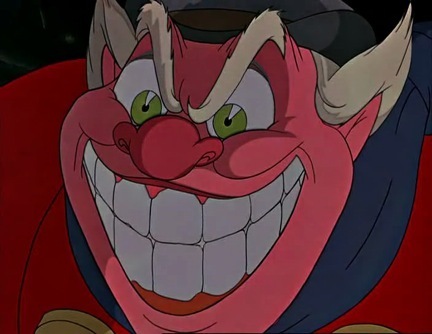 |
The Evil Coachman reveals his true face.
|
With
its mountains of ice cream and pavilions of candy, Pleasure Island is
an amusement park and every child’s dream come true. Unfortunately, that
dream also bears the danger of turning into a nightmare. Unknown to
visitors, it actually serves as a trap. For the Base Self, fed to
saturation and in the midst of a plethora of stimuli, runs riot. It is
as Abu Bakr, the First Caliph, described: “My Lord, You first tested us
with deprivation. We succeeded in that. Then You tested us with
affluence, and there we failed.”
Pleasure Island caters to a life of hedonism, ignorance, instant satisfaction and the gratification of one’s basest desires. The children can eat and drink as they please, they can indulge in smoking (today we would add the use of drugs), they can fight and destroy whatever they want. It is a place of earthly delights, devoid of morals and knowledge (there is no school).
We can see a similar situation in the vacation resorts of our day. These are paradises for madmen of the belly. Wherever you go on their premises, you’re overwhelmed with an excess of enticing food and a profusion of mind-numbing alcohol. Sexual pleasure, Allowed or otherwise, is there for the taking. Under such conditions, the Base Self cannot fail to run wild. The result is that one will end up making an ass of oneself.
Pleasure Island caters to a life of hedonism, ignorance, instant satisfaction and the gratification of one’s basest desires. The children can eat and drink as they please, they can indulge in smoking (today we would add the use of drugs), they can fight and destroy whatever they want. It is a place of earthly delights, devoid of morals and knowledge (there is no school).
We can see a similar situation in the vacation resorts of our day. These are paradises for madmen of the belly. Wherever you go on their premises, you’re overwhelmed with an excess of enticing food and a profusion of mind-numbing alcohol. Sexual pleasure, Allowed or otherwise, is there for the taking. Under such conditions, the Base Self cannot fail to run wild. The result is that one will end up making an ass of oneself.

From this... to this. The ass is, of course, a prime symbol for the Base Self.

Once
you give in to all the demands of the Base Self, you have effectively
placed a Tasmanian Devil (called “Taz” in the comics) in the driver’s
seat. After that, heaven help you!
Conscience
Jiminy
Cricket, who acts as Pinocchio’s conscience, sings: “Always let your
conscience be your guide.” The problem with this, however, is that
conscience is a faculty that needs to be trained and cultivated. For
conscience presupposes a knowledge of good and evil. But what is good
(pleasing to God) or bad (displeasing to God) is not easily intuited.
How do we distinguish the still, small voice of conscience from the
deceits of the Base Self? “Follow your heart,” we are told—but are we
following our heart or the Base Self? For this, one needs to accept and
become knowledgeable in a true religion. Armed with such a moral
compass, conscience then can, indeed, serve as a reliable guide—but only
afterwards.
Lying
Every
time Pinocchio lies, his nose grows longer, clearly alerting everyone
to the deed. It symbolizes that one lie paves the way for the next one,
until you are left with a whole chain of untruths.
You won’t lie if you don’t do things that need to be lied about.
The Prophet said: “Be truthful. Truthfulness leads to virtue, and
virtue draws you to heaven. Beware of lies. Lies lead to immorality, and
immorality leads to hell.”
Anger
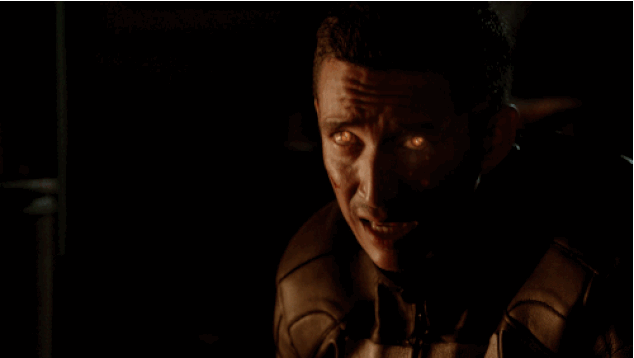
If the Base Self is given enough leeway, it will erupt in anger. After that, it will burn down and destroy everything within its reach. The Prophet said: “Anger is of the devil, and the devil was created from fire.” When his second wife, Aisha, became angry, he told her: “This is the Fire that has been called (by God) the place of the devil.”
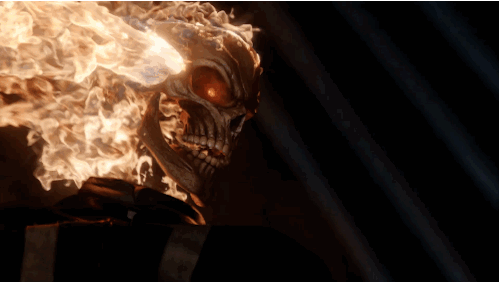
“The one within me... seeks revenge.” Ghost Rider in Marvel’s Agents of SHIELD, S04 (Eps. 1, 2, 6).
In
the former Tradition, the Prophet continues: “Fire is extinguished by
water. So if one of you gets angry, let them get up and take an
Ablution.” And in another Tradition, he said: “The true wrestler
(champion) is one who controls his (Base) self when he gets angry, not
one who throws his opponent to the ground.” When someone asked him for a
single, short piece of advice, he said: “Don't get angry.” He himself
was always calm and serene. He was vexed only if something was
especially offensive to God.
Moderation
Moderation
In
order to tame the Base Self, the exact opposite of overindulgence is
needed: to avoid excess in everything, and to occasionally engage in
asceticism: to starve the body of nutrients (don’t overdo it! As the
Master said, one mustn’t exceed a week). Only then can the wild
oscillations of the Base Self subside, and the spirit be allowed to come
to the fore.
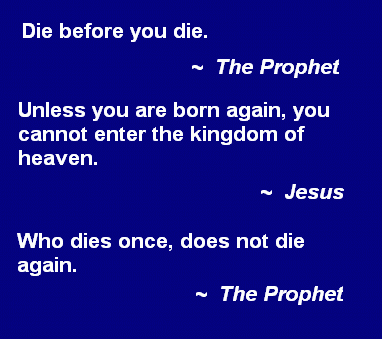 One
should avoid excess even in religion. According to a well-known
Tradition, three Companions of the Prophet decided they would go all the
way. One said: “I’m going to stay awake and perform the Prayer every
night,” the second said: “I’m going to Fast every day of my life,” and
the third said: “I’m going to practice sexual abstinence from now on.”
One
should avoid excess even in religion. According to a well-known
Tradition, three Companions of the Prophet decided they would go all the
way. One said: “I’m going to stay awake and perform the Prayer every
night,” the second said: “I’m going to Fast every day of my life,” and
the third said: “I’m going to practice sexual abstinence from now on.”
When the Prophet heard of this, he upbraided them, saying: “I’m foremost among the Godfearing, yet I sometimes Pray at night and sometimes I sleep. I sometimes fast and sometimes I don’t. And I marry women. Anyone who turns away from my Path is not one of mine.” He is also recorded as saying, “Who goes to extremes is ruined.” Moderation is key.
Speaking of, let me clarify one point. We tend to imagine the Prophet as some kind of warlord—always on the warpath, rushing from one battle to the next. This is a very big mistake. (Historians like to dwell on wars a lot because these are the highlights and gamechangers of history. They are also events that have the best chance of being recorded.) On the contrary, the Prophet’s battles totaled less than a month in a life of 63 years, and those were forced upon him.
There are two periods in his life: the periods in Mecca and Medina. His biography is truly a tale of two cities. The Meccan period comprised the revelation of the religion, the Medinan period was devoted to its consolidation. But its most important part had already been revealed while he was still in Mecca. The Master always told us to study the Prophet’s Meccan phase with care, because that was where the essentials of the religion were revealed.
 One
should avoid excess even in religion. According to a well-known
Tradition, three Companions of the Prophet decided they would go all the
way. One said: “I’m going to stay awake and perform the Prayer every
night,” the second said: “I’m going to Fast every day of my life,” and
the third said: “I’m going to practice sexual abstinence from now on.”
One
should avoid excess even in religion. According to a well-known
Tradition, three Companions of the Prophet decided they would go all the
way. One said: “I’m going to stay awake and perform the Prayer every
night,” the second said: “I’m going to Fast every day of my life,” and
the third said: “I’m going to practice sexual abstinence from now on.”When the Prophet heard of this, he upbraided them, saying: “I’m foremost among the Godfearing, yet I sometimes Pray at night and sometimes I sleep. I sometimes fast and sometimes I don’t. And I marry women. Anyone who turns away from my Path is not one of mine.” He is also recorded as saying, “Who goes to extremes is ruined.” Moderation is key.
Speaking of, let me clarify one point. We tend to imagine the Prophet as some kind of warlord—always on the warpath, rushing from one battle to the next. This is a very big mistake. (Historians like to dwell on wars a lot because these are the highlights and gamechangers of history. They are also events that have the best chance of being recorded.) On the contrary, the Prophet’s battles totaled less than a month in a life of 63 years, and those were forced upon him.
There are two periods in his life: the periods in Mecca and Medina. His biography is truly a tale of two cities. The Meccan period comprised the revelation of the religion, the Medinan period was devoted to its consolidation. But its most important part had already been revealed while he was still in Mecca. The Master always told us to study the Prophet’s Meccan phase with care, because that was where the essentials of the religion were revealed.
The Belly of the Whale
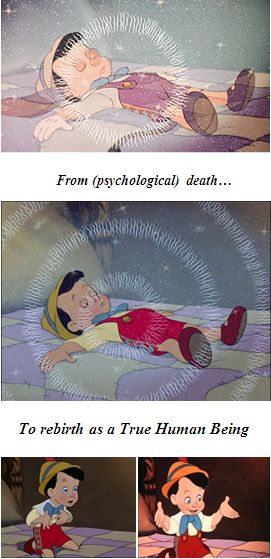
In search of his missing “father” Gepetto, Pinocchio is swallowed by Monstro, the giant whale.
Now where have we heard of this before? That’s right: Jonah and the whale! It’s in both the Bible and the Koran.
Regarding this, Master Kayhan said:
It
doesn’t digest him. It takes and regurgitates him on land. His clothes
were melted, he was left naked. He covers himself with something. But he
doesn’t live long after that. Human beings kill him. There are very
delicate points here. Don’t bother about them, they’re not for you to
understand.
(H. Bayman, The Teachings of a Perfect Master (2012), p. 290.)
Leaving aside meanings beyond our ken, let us rather focus on one we can fathom.
Jonah’s emergence from the giant fish is a symbol of rebirth. And
Pinocchio, too, dies as a result of his encounter with the whale and is
subsequently reborn as a real boy.
In
another sense, Pinocchio emerges from the dark, dank belly of the whale
into daylight, from darkness into light. That is, he achieves
Illumination. It’s like escaping from a buried coffin. (For a similar
initiation experience in Hermeticism, go to the latter part of this.) Just like Jonah, about whom the Master explained:
From
the belly of the whale, he repeats over and over again: ‘There is no
god but You. Glory be to You. I have been of the wrong-doers’ [21:87].
They say that with this prayer, Jonah made his Ascension in the belly of
the whale. (Ibid.)
Whenever
you’re in a fix (a tight place), if you repeat the same Verse as
Invocation, it is to be hoped that Divine Aid will reach out to you,
too.
In short, Pinocchio recapitulates the sagas of at least two prophets: Adam and Jonah.
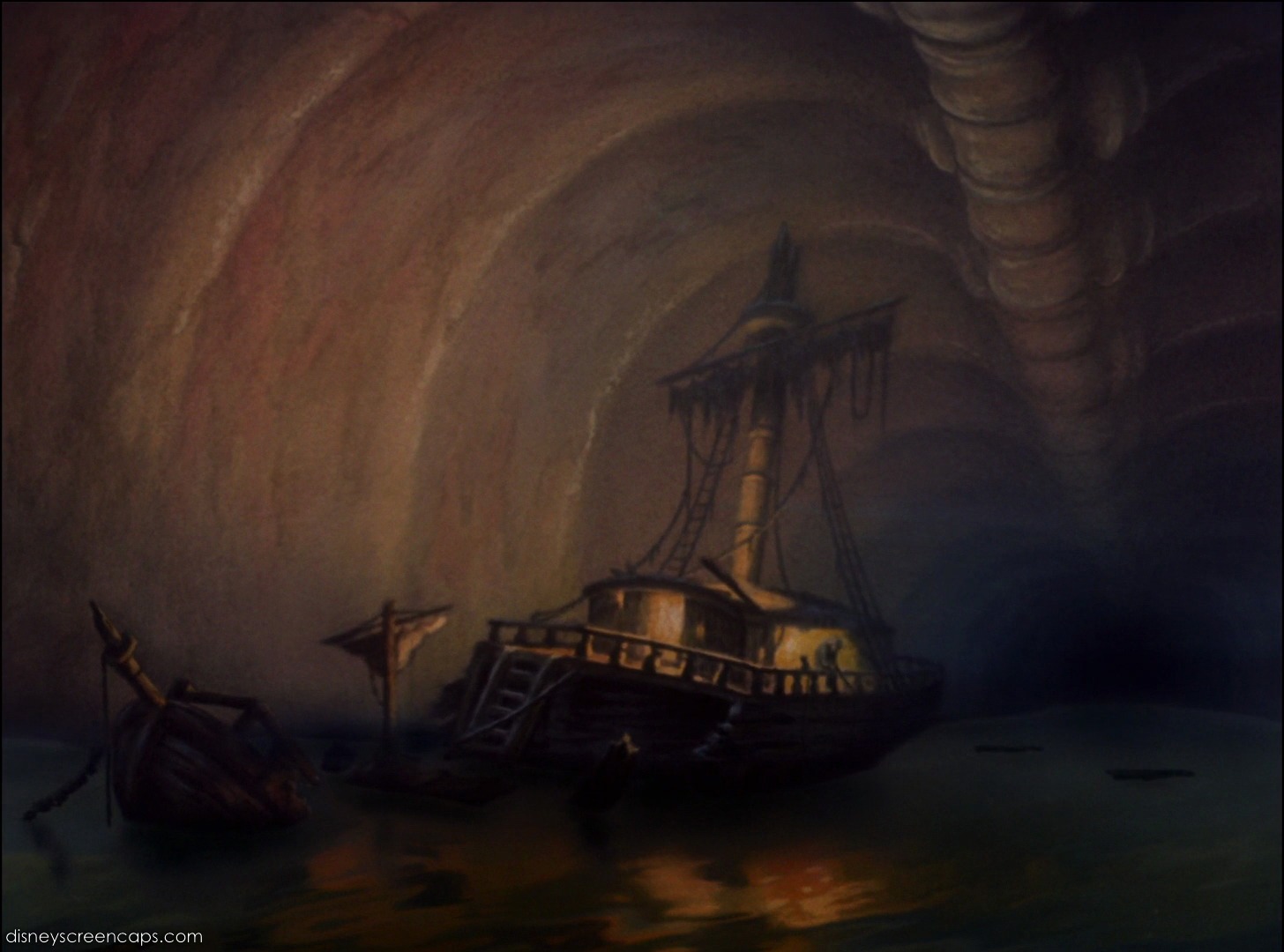 From Plato’s Cave to Aladdin’s Cave
From Plato’s Cave to Aladdin’s CaveIn some respects, the cavernous stomach of Monstro calls to mind the famous cave of the philosopher Plato. Without enlightenment, Plato said in The Republic, we are like prisoners chained to the bottom of a dark cave. Strange, incomprehensible shadows parade before our eyes, yet we have no way of apprehending the realities they correspond to.
From this, let us move on to another famous Disney movie, Aladdin (1992), inspired by the tale from the 1001 (or Arabian) Nights. In search of the fabulous Lamp, Aladdin descends into a cave: the Cave of Wonders.

Like Plato’s Cave, the Cave of Wonders is a symbol for the world we live in: more precisely, the external world accessible through our five physical senses. Pay no heed to the treasures lying at your feet, wonderful though they are. You must walk through these as if they were dust, and concentrate only on one goal: reaching the Stairway, at the top of which is the Beam-up (miraj: stairway or Ascension).
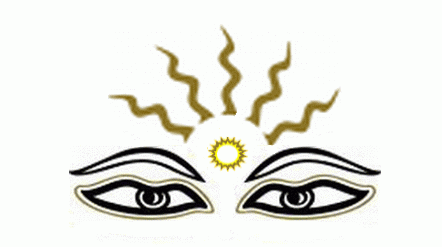 |
The Light of God "comes to the distance of two bows/arcs, or even closer" (53:9)
|
In
order to activate this process, you have to polish the lamp, which is a
symbol for your Heart. The Prophet said: “There is a polish for
everything, and the polish of Hearts is the Invocation of God.”
Moreover, the Invocation (dhikr) or remembrance of God is embedded in the Formal Prayer (namaz, salat),
which is the very thing the Prophet called “the Ascension of the
faithful.” If, like the Prophet, your “attention does not stray, nor
does it swerve” (53:17) for even an instant, then God will “reveal to
His servant what He reveal(s)” (53:10). If you are able to attain such
laser-like concentration, your sins will drop away like autumn leaves,
and you will find yourself in the elevator (they call it jazba, “divine attraction,” in Sufism and “tractor beam” in science fiction) that leads to the Divine Presence.

The Ship of Saints
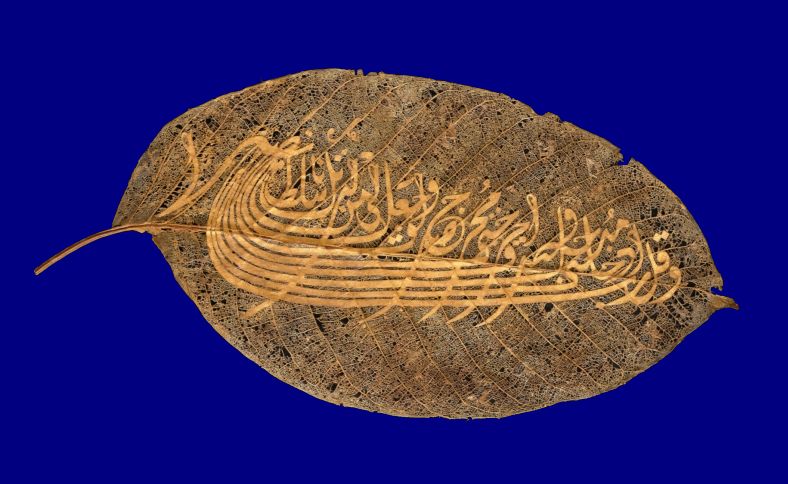
(Copyright Aga Khan Museum)
Gold
calligraphy on chestnut leaf in the form of a ship. The inscription
reads: “And say: ‘Lord, grant me a good entry and a goodly exit, and
sustain me with Your power’” (17:80).
The
Ship of (Sufi) Saints is an analogue of Noah’s Ark: it is the
instructions, protection, aid and blessings of a Perfect Master, which
enable a student to brave high and dangerous seas and safely reach the
other shore of Realization. In the term ilm al-safina, another
meaning is revealed: this refers to the knowledge obtained from the
Books, i.e. the revealed books, the instructions of which help us to
attain salvation.(As an aside, to my knowledge there are two books bearing this title. The first is Dara Shikoh’s Safinat ul-Awliya (Arabic, 1640), dealing with the biographies of Sufi saints. The other is Hüseyin Vassaf’s much larger Sefine-i Evliya (Turkish, 1925), in which he relates the lives of almost 2000 Sufi saints.)

The Penultimate Stage
In Sufism, the self of the traveler progresses through seven stages that begin with the Base Self and culminate with the Purified Self. Years, perhaps decades, of preparation are needed to climb this mountain, for the conditions of the world do not permit an easy ascent without constant struggle. For brevity, let us skip some of the intermediate stages and focus on the last two.
To
the mature person at the sixth stage, the first good signs of the great
viceregency begin to appear. At the end of this process he is dressed
in all the regalia of that rank. The servant knows all the subtle
secrets of things through the knowledge given him by His Lord. God has
informed His servants of these secrets with the proclamation: “I taught
Adam the names of all things.” There are secrets associated with this
stage that cannot be expressed in words. It is impossible for anyone not
possessing this state to comprehend these, for they do not have
correlates in the external world to which they might be compared.
(H. Bayman, The Station of No Station (2001), p. 141.)
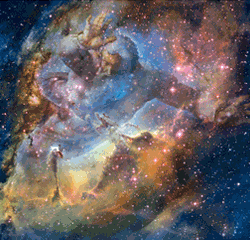
(C. Spiegel-Verlag, 24/2014)
The Universal Man or Cosmic Human are two other names for the Perfect Human Being (insan al-kâmil).
Such a person has transcended petty boundaries and established kinship
with all that is. S/he has become brethren with everything in the
universe. Thus, a Friend (wali, pl. awliya) of God is a friend of all being. As the Turkish Sufi poet Niyazi Misri sang:
“I used to think that in the world, no friends were left for me
I left my me behind and knew: no others are left for me.”
“I used to think that in the world, no friends were left for me
I left my me behind and knew: no others are left for me.”
The Seventh Level
This
level in the stages of selfhood corresponds to the culmination of the
inner journey, yielding the Perfect Human Being, also known as the
Universal Man or Cosmic Human. As I have written elsewhere:
The human self that has risen to the seventh station is called the perfect self because it has reached the pinnacle of maturity, and the purified or pure self (safiya or zakiya,
after 18:74, 87:14, 91:9) because it has become completely purified.
The seeker can rise to the sixth stage by struggle, but the seventh can
only be bestowed on him by the grace of God. This is the final stage of
human evolution, where all human potentials manifest themselves in full
bloom. It is also the level at which the mystery of Unity is fully
revealed. The consciousness and knowledge that obtain at this stage have
been called “objective consciousness” and “objective knowledge” because
there is no trace left of the delusions generated by the Base Self.
The
seventh station is the highest and most exalted station of all. The
Inner Kingdom (the Kingdom which, as Jesus said, “is within you”) has
reached perfection, and the struggle is finished. Asceticism and
self-restraint are no longer necessary. It is enough to avoid excess in
all things. The possessor of this stage has no desires left, for they
have all been granted. He still continues, however, to wish for the
pleasure of his Lord.
The
actions of the perfect human being at this stage are all goodness and
worship. His sweet breath is power and grace. His gentle speech is
knowledge and wisdom, sweetness and light. His blessed face radiates
peace and joy. His sweet and effective speech is soothing, peaceful, and
affectionate.
The
person at this stage is never without worship, even for a moment. He
worships with all his bodily organs, with his tongue, hands, and feet,
or solely with his heart, and is never heedless of his Lord.
Such
a person repents frequently. He is extremely humble. The tendency of
people to seek God pleases him greatly. He is sad and offended if they
neglect God. He loves those who desire and love God more than he would
love his own child. Both his love and his anger are not for his self,
but for God alone. Everything he does is right. He acts with justice in
everything. His every wish is in accord with God’s wishes... he is one
who has attained “the Station of No Station.”
(H. Bayman, The Station of No Station (2001), pp. 141-2.)
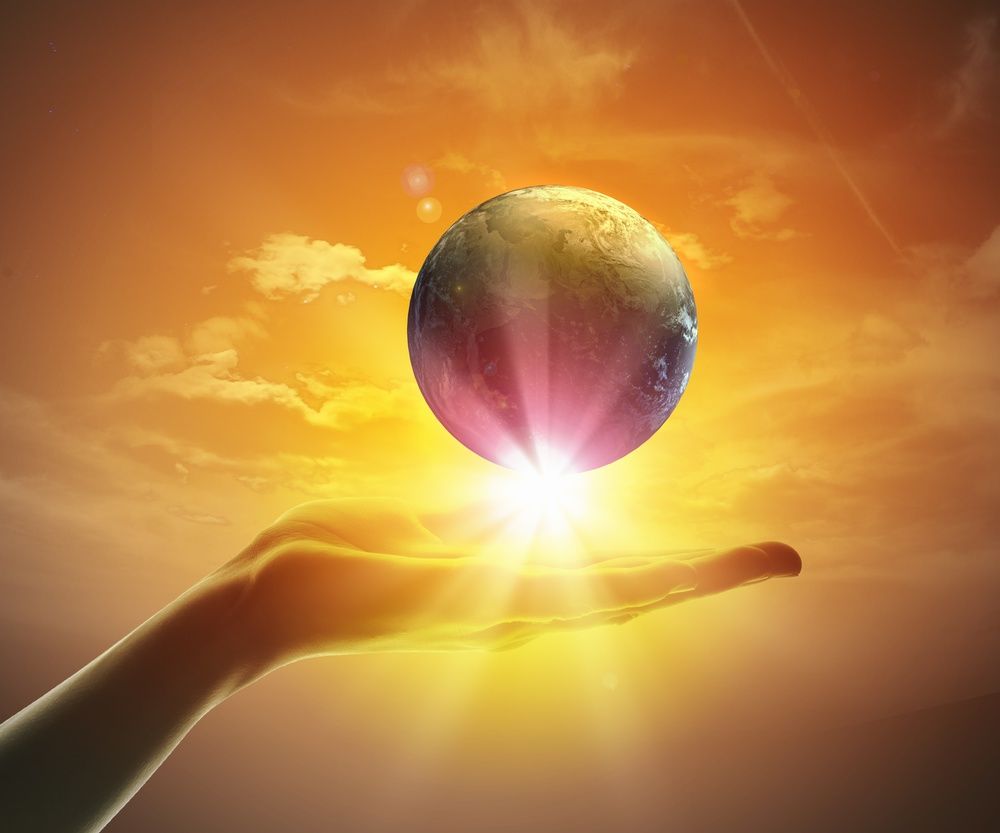
The Sufi Saint
Let Master Kayhan have the last word:
The
saint is a person who has gathered the attributes of the four poles,
who combines within himself the qualities of the sun, water, earth and
night. He is like the sun in loving-kindness, like water in generosity,
like the earth in humility and like the night in hiding sins. An ant is
his life and soul. A blade of grass is his life and soul.
The
saint has taken the universe in hand. If I were to sit in the shade and
say: ‘Bring me the sun, bring me wind,’ you couldn’t. One has to be
like that. The easiest miraculous feat is to talk with the dead. Go
ahead, talk! You have to die before you die, then it’s possible.
Whatever is difficult for your ego, do that. If one is in possession of
those truths, one is not a prophet, but one is fulfilling the morality
of the prophets.
(H. Bayman, The Teachings of a Perfect Master (2012), p. 345.)